
MANUFACTURER'S SPECIFICATIONS
Frequency Response: 40 Hz to 17 kHz ±3 dB, Nakamichi EX tape; 40 Hz to 16 kHz ±3 dB, CrO2 tape; 40 Hz to 15 kHz ±3 dB, low-noise tape.
Wow and Flutter: Less than 0.13% WTD peak.
Signal-to-Noise Ratio: Better than 58 dB, CrO2 tape; better than 55 dB, Nakamichi EX tape (both W rms, 400 Hz, 3% THD, Dolby).
THD: Less than 2% at 1 kHz.
Erasure: Better than 60 dB at 1 kHz.
Crosstalk: Better than 60 dB at 1 kHz.
Dimensions: 15 in. W. x 10 in. D. x 4 1/2 in H.
Weight: 15 lbs.
Price: $399.00.
The Nakamichi folks were pioneers in the tape recorder industry, and they have made cassette recorders and component parts for many well-known companies all over the world. It is still a family concern, and during the past three years or so they have built up quite an excellent reputation for well-engineered, top-quality cassette decks, both for home and for studio use. Their top-of-the-line model, the 1000 Tri-Tracer, which we reviewed in March, 1974, is a professional-grade, state-of-the-art machine with three heads, two noise reduction systems, head alignment facility, and a host of other very intriguing and worthwhile features. At $1,295.00, it is quite expensive, as cassette recorders go, but it has to be with all its features. However, it was soon followed by the Model 700, which retained the three-head system and the alignment facility and cost considerably less at $849.00. More recently, Nakamichi has introduced the Model 500, a two-head machine; at the very competitive price of $399.00. It does not have all the features and refinements of the 1000 and 700 models, but it does have some innovations of its own, including a focused gap head, and naturally includes Dolby. And, most importantly, in terms of the basic performance parameters, such as frequency response, distortion, signal-to-noise ratio, and so on, the 500 compares very favorably as we shall see.
Styling of the 500 is unlike most American or Japanese recorders, being more European in concept, with a matte black panel with just a touch of chrome to make a very pleasing contrast to the white end pieces. The two VU meters are mounted on an inclined panel at the back, and the neat, uncluttered scales make them seem even larger than they really are--which is quite large indeed. Note that the calibration is from -40 dB to +5 dB, but more about these meters later.
There are six controls keys at the front of the machine towards the left for the standard functions, Record, Rewind, Eject-Stop, Play-Record, Fast Forward, and Pause. Just to their right, at the front of the machine, are four lever switches. The first pair is for selection of bias and equalization for either CrO2, EX or Normal. The EX position is for high output, fine grain tapes, such as the Nakamichi EX or Maxell UDZ tape. Next in the row of switches comes the Dolby In/Out/Tone lever, after which comes the limiter On/Off switch.

Fig. 1-Close up of one meter.
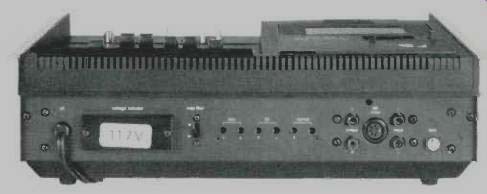
Fig. 2-View of back, with nameplate removed.
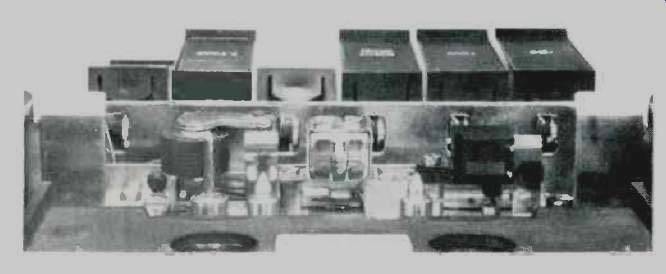
Fig. 3--Close up view of transport and heads from behind the machine. Pinch
roller and capstan are at left, record playback head at center, and erase
head on right.
Behind the row of switches is a group of six slider controls that, reading from the left, control the blend mike, left and right mikes, line inputs, and the ganged output. The power switch is at the lower right-hand corner, while the Record and Dolby indicator lights are between the two VU meters.
A digital counter and a memory rewind switch are both located to the left of and behind the cassette compartment.
The three microphone input jacks, left, right, and blend, are located on the short, vertical front panel, together with a headphone jack.
On the rear of the machine is a multiplex filter switch, an a.c. voltage selector, the input and output sockets, a DIN socket, and Dolby calibration controls. There are six of these last named controls tucked away under a nameplate (removed for the photo), two for each kind of tape. Now, that's perfection for you! The Dolby switch on the front panel has a third position, marked Tone, which gives a 400-Hz reference signal at 0 VU, so you can adjust the calibration controls accordingly.
The standard Dolby level of 200 nano-webers per meter corresponds to 0 VU on these meters, instead of +2 or +3 as with some other recorders. Since their scale is non-linear (actually semi-logarithmic), the usable range is much greater than usual. Furthermore, the meters are peak-reading instruments with a fast attack time of 150 mS and a slow decay time of nearly two seconds, so they give a very accurate indication over a wide dynamic range.
The record-replay head uses a new technique of manufacture to produce a 1.5 micron head gap, whose effective magnetic gap width is kept at that width by careful control of the manufacturing stresses. Nakamichi calls this a focused-gap head, and it controls the lines of force in the magnetic field to provide optimum results and a minimum compromise between the conflicting playback and recording requirements. Figure 3 shows the transport mechanism and head layout, viewed from the back of the machine. The pinch roller and capstan are on the left, the record-playback head in the center, and the erase head on the right. The motor is a d.c. type and is servo controlled.
Measurements
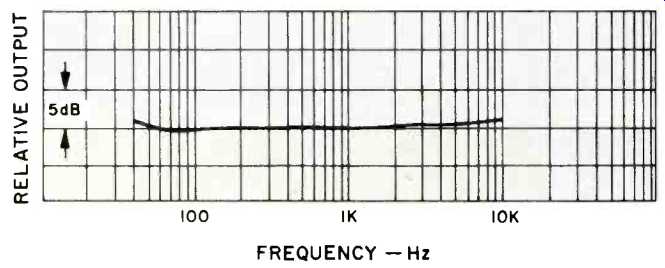
Fig. 4--Response from standard test tape.
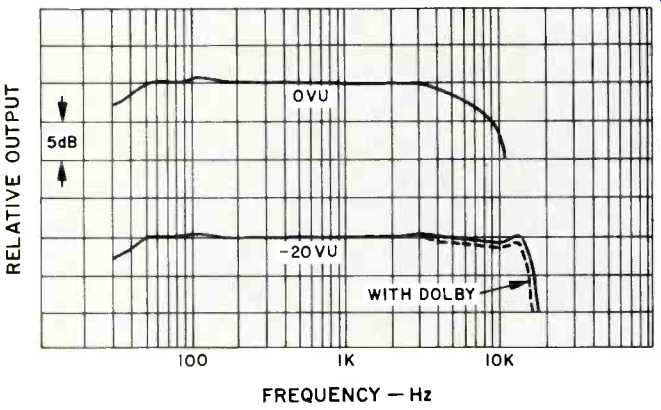
Fig. 5--Record-replay response with Nakamichi CrO2 tape.
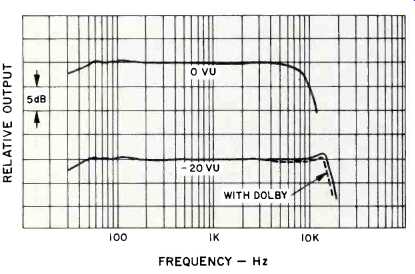
Fig. 6--Record-replay response with Nakamichi EX tape.

Fig. 7--Record-replay response with TDK ED tape.
Replay response from a standard test tape is shown in Fig. 4, and record-replay response with Nakamichi CrO2 tape is shown in Fig. 5. The next graph, Fig. 6, shows the response with Nakamichi EX tape, and it will be seen that the 3-dB down point is at 18.5 kHz, as compared with 18 kHz for CrO2. Headroom is slightly better too-but note that the meter's zero point corresponds to +2 of the DIN standard.
Figure 7 shows the response with the bias and equalization set at Normal for the recommended TDK ED tape. The-3 dB point is at 18 kHz with a slight rise from about 5 kHz.
The next step was to check the Dolby system. Tracking at -20 dB on the meter was excellent, with a deviation of less than 1 dB. Channel matching was very close, being within 0.3 dB over most of the range. Distortion at 1 kHz for the three tapes can be seen in Fig. 8, while distortion versus frequency is shown in Fig. 9. Signal-to-noise ratio (with ANSI A weighting) was 56, 52, and 49 dB for CrO2, Nakamichi EX, and TDK ED tapes, respectively. With the Dolby system switched in, the figures were 64, 60, and 57 dB. All the figures are at 0 VU. If the reference point is the 3% distortion level, then these figures should be increased by 3 dB. Input voltage required for 0 VU indication was 70 mV for line inputs and 0.18 mV for the mike inputs. Maximum output was then 1.13 volts. The erase-MPX filter, which prevents the 19-kHz FM carrier from interfering with the Dolby operation, had an attenuation of 29 dB at 19 kHz with a 2-dB peak at 15 kHz. Erase efficiency was better than 65 dB, and crosstalk measured 65 dB at 400 Hz. Wow and flutter was exceptionally low, measuring only 0.08% using the DIN-weighted standard for record-replay. Tape speed was less than 1% fast, and the Fast Forward speed was slower than usual at 1 min, 50 sec. for a C-60 cassette.
It will be seen that all the specifications were met or exceeded by a comfortable margin, and it appears that the focused-gap head is obviously more than an advertising gimmick--it really works.

Fig. 8--Distortion versus meter level at 1 kHz for three tapes and showing
effect of the limiter.

Fig. 9--Percentage THD versus frequency at-5 dB meter level for three tape
formulations.
Listening and Use Tests
Tests were carried out over a period of several weeks, and I must say that I was particularly impressed with two of the features--the absolute quietness of the transport system and those incredible meters. I knew that the machine was pretty quiet when I tested it in the lab, but I did not realize just how quiet until I moved it into the listening room! I liked that logarithmic scale on the VU meters and the fast response of the meter's ballistics was unusually accurate, better in fact than that of some meters used in expensive open reel machines.
A number of tapes were made, both with and without the benefit of Dolby, and on one occasion a small group was recorded using the blend position for a center microphone.
Nakamichi, incidentally, has recently published a good booklet describing the three-point microphone technique, which can add a good sense of depth or space to a recording that is not easily obtained with a standard two-point system.
Some care should be taken to avoid overloading the front end of this recorder, and an attenuator might be necessary with some high output microphones.
All in all, the Nakamichi 500 is a well-engineered, very versatile cassette recorder which will appeal to those who want above-average performance at the lowest possible cost. Are there any criticisms? Well, yes, a small one. I found the Eject-Stop key a little difficult to get used to; it works by the double pressure principle, and sometimes the tape ejected when I only wanted it to stop. But I am probably being hypercritical (or just plain ham-fisted) because my wife never had the slightest difficulty! There is also another two-head cassette deck available from Nakamichi, the Model 550, which is a portable model using batteries. This unit has higher headphone output, about 300 mW, and includes a preset timer, an alarm to signal the end of the tape, and a switch to permit use of the recording level meter to test the condition of the battery.
Dimensions are 12-1/4 in. W x 13-3/4 in. D x 3-1/2 in. H; weight, 11-1/4 lbs less batteries, and price is $499.00.
-George W. Tillett
(Source: Audio magazine, Nov. 1975 )
Also see:
Nakamichi Tri-Tracer 1000 Cassette Recorder (Equip. Profile, Mar. 1974)
Nakamichi Model 600 Stereo Cassette Console (Equip. Profile, Sept. 1976)
Nakamichi ZX-7 Cassette Deck (May 1982)
Nakamichi cassette decks (Dec. 1982)
= = = =